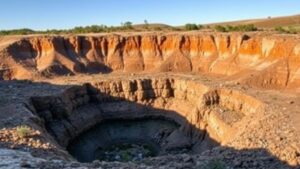The Role of Fire Pits in Ancient Ore Roasting Techniques
The Role of Fire Pits in Ancient Ore Roasting Techniques
In ancient metallurgy, the process of ore roasting was critical for extracting metals from their ores. Among the various tools and methods employed, fire pits played a vital role in enhancing the efficiency and effectiveness of this process. This article explores the significance of fire pits in ancient ore roasting techniques, delving into their construction, usage, and impact on early metalworking civilizations.
Understanding Ore Roasting
Ore roasting involves the heating of ores to high temperatures to induce chemical reactions that make metals more accessible for extraction. primary goals of this process include:
- Removing volatile impurities
- Converting sulfide minerals into oxides
- Facilitating the subsequent smelting process
Roasting is crucial because raw ores often contain multiple elements, some of which may hinder the smelting process if not removed. For example, copper sulfide ores must be roasted to transform them into copper oxide, which can then be reduced to obtain metallic copper.
Construction of Fire Pits
Fire pits used in ancient roasting techniques were typically constructed with locally sourced materials, often built into the ground or with stone surrounds to contain the fire and maintain consistent temperatures. These pits varied in design, but common features included:
- A bowl-shaped structure to hold the ore and fuel
- Ventilation openings to allow for adequate airflow
- A covering or cap to retain heat and minimize heat loss
For example, archaeological findings in ancient Roman mining sites reveal circular stone fire pits that not only provided efficient roasting but also helped regulate the temperature and distribution of heat.
Fuel Sources and Their Impact
The type of fuel used in fire pits significantly influenced roasting efficiency. Common fuel sources included:
- Wood
- Charcoal
- Dried animal dung
Wood was frequently used due to its availability, but charcoal became preferred as it burns hotter and longer. This adaptability in fuel usage highlights the ingenuity of ancient metallurgists. A study of ancient Near Eastern sites found that the use of charcoal led to more consistent roasting temperatures and improved metal recovery rates.
Real-World Applications and Case Studies
Several ancient civilizations utilized fire pits for ore roasting, showcasing different methods suited to their specific environments:
- Egyptians: Evidence shows that Egyptians roasted copper ores near the Sinai Peninsula, using fire pits lined with stone to maximize heat concentration.
- Romans: The Romans mastered the technique of using fire pits for roasting lead ores, enhancing metal recovery during their extensive mining operations throughout Europe.
- Indigenous Peoples of the Americas: Some Native American tribes utilized fire pits for roasting ores, especially in areas rich in copper, which played a significant role in their metallurgical traditions.
The Impact of Fire Pits on Ancient Metallurgy
The use of fire pits in ore roasting significantly advanced early metallurgy by:
- Increasing the quantity of recoverable metals
- Allowing for the development of more complex alloys
- Facilitating trade by improving the quality of metal goods
As societies learned to optimize their roasting techniques, the efficiency in metal production grew, ultimately leading to advancements in tool making and weaponry that shaped the course of human history.
Conclusion
Fire pits served as critical components of ancient ore roasting techniques, impacting the efficiency of metal extraction and influencing the development of various civilizations. Understanding these methods provides insights into the technological innovations of ancient peoples and their lasting impact on metallurgy. By appreciating the ingenuity of fire pit construction and usage, we can better understand the foundations of modern metallurgical practices.
Actionable Takeaways
- Examine local archaeological sites for remnants of ancient fire pits to learn more about historical metallurgical practices.
- Consider the role of raw materials and natural resources in developing technological innovations in your own community.
- Engage in discussions about how ancient techniques can inform today’s practices in sustainable metallurgy.

